#pharma & healthcare
Text
"The Biden Administration last week [early December, 2023] announced it would be seizing patents for drugs and drug manufacturing procedures developed using government money.
A draft of the new law, seen by Reuters, said that the government will consider various factors including whether a medical situation is leading to increased prices of the drug at any given time, or whether only a small section of Americans can afford it.
The new executive order is the first exercise in what is called “march-in-rights” which allows relevant government agencies to redistribute patents if they were generated under government funding. The NIH has long maintained march-in-rights, but previous directors have been unwilling to use them, fearing consequences.
“We’ll make it clear that when drug companies won’t sell taxpayer funded drugs at reasonable prices, we will be prepared to allow other companies to provide those drugs for less,” White House adviser Lael Brainard said on a press call.
But just how much taxpayer money is going toward funding drugs? A research paper from the Insitute for New Economic Thought showed that “NIH funding contributed to research associated with every new drug approved from 2010-2019, totaling $230 billion.”
The authors of the paper continue, writing “NIH funding also produced 22 thousand patents, which provided marketing exclusivity for 27 (8.6%) of the drugs approved [between] 2010-2019.”
How we do drug discovery and production in America has a number of fundamental flaws that have created problems in the health service industry.
It costs billions of dollars and sometimes as many as 5 to 10 years to bring a drug to market in the US, which means that only companies with massive financial muscle can do so with any regularity, and that smaller, more innovative companies can’t compete with these pharma giants.
This also means that if a company can’t recoup that loss, a single failed drug can result in massive disruptions to business. To protect themselves, pharmaceutical companies establish piles of patents on drugs and drug manufacturing procedures. Especially if the drug in question treats a rare or obscure disease, these patents essentially ensure the company has monoselective pricing regimes.
However, if a company can convince the NIH that a particular drug should be considered a public health priority, they can be almost entirely funded by the government, as the research paper showed.
Some market participants, in this case the famous billionaire investor Mark Cuban, have attempted to remedy the issue of drug costs in America by manufacturing generic versions of patented drugs sold for common diseases."
-via Good News Network, December 11, 2023
#united states#us politics#biden administration#executive order#prescription drugs#medical news#healthcare#healthcare access#biden#big pharma#drug prices#public health#nih#national institutes of health#good news#hope
10K notes
·
View notes
Text
A big cost and concern for many seniors in the U.S. is the price of prescription drugs and other healthcare expenses—and this year, thanks to The Inflation Reduction Act, their costs may go down dramatically, especially for patients fighting cancer or heart disease.
I learned about the new benefits because my ‘Medicare birthday’ is coming up in a couple months when I turn 65. I was shocked that there were so many positive changes being made, which I never heard about on the news.
Thousands of Americans on Medicare have been paying more than $14,000 a year for blood cancer drugs, more than $10,000 a year for ovarian cancer drugs, and more than $9,000 a year for breast cancer drugs, for instance.
That all changed beginning in 2023, after the Biden administration capped out-of-pocket prescriptions at $3,500—no matter what drugs were needed. And this year, in 2024, the cap for all Medicare out-of-pocket prescriptions went down to a maximum of $2,000.
“The American people won, and Big Pharma lost,” said President Biden in September 2022, after the legislation passed. “It’s going to be a godsend to many families.”
Another crucial medical necessity, the shingles vaccine, which many seniors skip because of the cost, is now free. Shingles is a painful rash with blisters, that can be followed by chronic pain, and other complications, for which there is no cure
In 2022, more than 2 million seniors paid between $100 and $200 for that vaccine, but starting last year, Medicare prescription drug plans dropped the cost for shots down to zero.
Another victory for consumers over Big Pharma affects anyone of any age who struggles with diabetes. The cost of life-saving insulin was capped at $35 a month [for people on Medicare].
Medicare is also lowering the costs of the premium for Part B—which covers outpatient visits to your doctors. 15 million Americans will save an average of $800 per year on health insurance costs, according to the US Department of Health and Human Services.
Last year, for the first time in history, Medicare began using the leverage power of its large patient pool to negotiate fair prices for drugs. Medicare is no longer accepting whatever drug prices that pharmaceutical companies demand.
Negotiations began on ten of the most widely used and expensive drugs.
Among the ten drugs selected for Medicare drug price negotiation were Eliquis, used by 3.7 million Americans and Jardiance and Xarelto, each used by over a million people. The ten drugs account for the highest total spending in Medicare Part D prescription plans...
How are all these cost-savings being paid for?
The government is able to pay for these benefits by making sure the biggest corporations in America are paying their fair share of federal taxes.
In 2020, for instance, dozens of American companies on the Fortune 500 list who made $40 billion in profit paid zero in federal taxes.
Starting in 2023, U.S. corporations are required to pay a minimum corporate tax of 15 percent. The Inflation Reduction Act created the CAMT, which imposed the 15% minimum tax on the adjusted financial statement income of any corporation with average income that exceeds $1 billion.
For years, Americans have decried the rising costs of health care—but in the last three years, there are plenty of positive developments.
-via Good News Network, February 25, 2024
#united states#medicare#healthcare#healthcare access#big pharma#prescription drugs#health insurance#us politics#good news#hope#seniors#aging#healthy aging
2K notes
·
View notes
Text

Every big pharmaceutical CEO: ‘Well, we just got our best ad campaign ever.”
788 notes
·
View notes
Text


Source
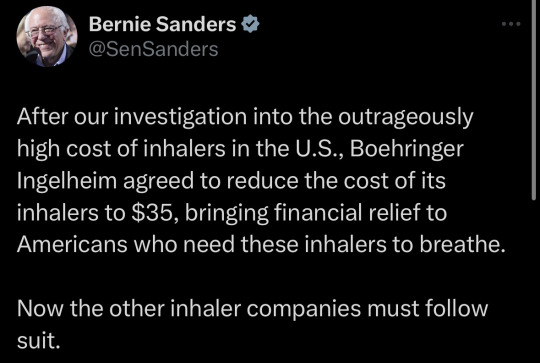

Source
Can’t emphasize enough how many more wins like this we would’ve had with a Bernie presidency
#health#health care#capitalism#public health#universal healthcare#Medicare for all#good news#big pharma
644 notes
·
View notes
Text

Big Pharma AND our “health” organizations are corrupt and need to be disbanded.
#truth#common sense#msm is the enemy#globalist playbook#fda#nih#cdc#big pharma#healthcare corruption
269 notes
·
View notes
Text

Big pharmas
Your prescription is ready sir
#big pharma#mature woman#mature beauty#ai photography#pharmacist#professionalgrowth#large bust#cougar#ai generated#leonardo ai#woman#healthcare#rx#long hair#pharmacy services
66 notes
·
View notes
Text
Eli Lilly, a major U.S.-based drugmaker, has issued a warning regarding a shortage of insulin medication in Canada, which is expected to persist through mid-April.
The 10-millilitre vials of the insulin Humalog are impacted by the shortage, Drug Shortages Canada first reported on Monday.
Humalog, also known as insulin lispro, is a “fast-acting” insulin used to control high blood sugar in adults and children with Type 1 or Type 2 diabetes, according to Eli Lilly’s website.
“Lilly Canada has posted a shortage of the Humalog 10 mL vial on Drug Shortages Canada,” an Eli Lilly spokesperson told Global News in a Friday email. “Lilly is currently managing the existing Canadian supply of the 10 mL vial to ensure minimal disruption at the patient level.” [...]
Continue Reading.
Tagging: @newsfromstolenland
41 notes
·
View notes
Text
Dinkclump Linkdump

I'm on tour with my new novel The Bezzle! Catch me TONIGHT in LA (Saturday night, with Adam Conover), Seattle (Monday, with Neal Stephenson), then Portland, Phoenix and more!

Some Saturday mornings, I look at the week's blogging and realize I have a lot more links saved up than I managed to write about this week, and then I do a linkdump. There've been 14 of these, and this is number 15:
https://pluralistic.net/tag/linkdump/
Attentive readers will note that this isn't Saturday. You're right. But I'm on a book tour and every day is shatterday, because damn, it's grueling and I'm not the spry manchild who took Little Brother on the road in 2008 – I'm a 52 year old with two artificial hips. Hence: an out-of-cycle linkdump. Come see me on tour and marvel at my verticality!
https://pluralistic.net/2024/02/16/narrative-capitalism/#bezzle-tour
Best thing I read this week, hands down, was Ryan Broderick's Garbage Day piece, "AI search is a doomsday cult":
https://www.garbageday.email/p/ai-search-doomsday-cult
Broderick makes so many excellent points in this piece. First among them: AI search sucks, but that's OK, because no one is asking for AI search. This only got more true later in the week when everyone's favorite spicy autocomplete accidentally loaded the James Joyce module:
https://arstechnica.com/information-technology/2024/02/chatgpt-alarms-users-by-spitting-out-shakespearean-nonsense-and-rambling/
(As Matt Webb noted, Chatbots have slid rapidly from Star Trek (computers give you useful information in a timely fashion) to Douglas Adams (computers spout hostile, impenetrable nonsense at you):
https://interconnected.org/home/2024/02/21/adams
But beyond the unsuitability of AI for search results and beyond the public's yawning indifference to AI-infused search, Broderick makes a more important point: AI search is about summarizing web results so you don't have to click links and read the pages yourself.
If that's the future of the web, who the fuck is going to write those pages that the summarizer summarizes? What is the incentive, the business-model, the rational explanation for predicting a world in which millions of us go on writing web-pages, when the gatekeepers to the web have promised to rig the game so that no one will ever visit those pages, or read what we've written there, or even know it was us who wrote the underlying material the summarizer just summarized?
If we stop writing the web, AIs will have to summarize each other, forming an inhuman centipede of botshit-ingestion. This is bad news, because there's pretty solid mathematical evidence that training a bot on botshit makes it absolutely useless. Or, as the authors of the paper – including the eminent cryptographer Ross Anderson – put it, "using model-generated content in training causes irreversible defects":
https://arxiv.org/abs/2305.17493
This is the mathematical evidence for Jathan Sadowski's "Hapsburg AI," or, as the mathematicians call it, "The Curse of Recursion" (new band-name just dropped).

But if you really have your heart set on living in a ruined dystopia dominated by hostile artificial life-forms, have no fear. As Hamilton Nolan writes in "Radical Capital," a rogues gallery of worker-maiming corporations have asked a court to rule that the NLRB can't punish them for violating labor law:
https://www.hamiltonnolan.com/p/radical-capital
Trader Joe’s, Amazon, Starbucks and SpaceX have all made this argument to various courts. If they prevail, then there will be no one in charge of enforcing federal labor law. Yes, this will let these companies go on ruining their workers' lives, but more importantly, it will give carte blanche to every other employer in the land. At one end of this process is a boss who doesn't want to recognize a union – and at the other end are farmers dying of heat-stroke.
The right wing coalition that has put this demand before the court has all sorts of demands, from forced birth to (I kid you not), the end of recreational sex:
https://www.lawyersgunsmoneyblog.com/2024/02/getting-rid-of-birth-control-is-a-key-gop-agenda-item-for-the-second-trump-term
That coalition is backed by ultra-rich monopolists who want wreck the nation that their rank-and-file useful idiots want to wreck your body. These are the monopoly cheerleaders who gave us the abomination that is the Pharmacy Benefit Manager – a useless intermediary that gets to screw patients and pharmacists – and then let PBMs consolidate and merge with pharmacy monopolists.
One such inbred colossus is Change Healthcare, a giant PBM that is, in turn, a mere tendril of United Healthcare, which merged the company with Optum. The resulting system – held together with spit and wishful thinking – has access to the health records of a third of Americans and processes 15 billion prescriptions per day.
Or rather, it did process that amount – until the all-your-eggs-in-one-badly-maintained basket strategy failed on Wednesday, and Change's systems went down due to an unspecified "cybersecurity incident." In the short term, this meant that tens of millions of Americans who tried to refill their prescriptions were told to either pay cash or come back later (if you don't die first). That was the first shoe dropping. The second shoe is the medical records of a third of the country.
Don't worry, I'm sure those records are fine. After all, nothing says security like "merging several disparate legacy IT systems together while simultaneously laying off half your IT staff as surplus to requirements and an impediment to extracting a special dividend for the private equity owners who are, of course, widely recognized as the world's greatest information security practitioners."
Look, not everything is terrible. Some computers are actually getting better. Framework's user-serviceable, super-rugged, easy-to-repair, powerful laptops are the most exciting computers I've ever owned – or broken:
https://pluralistic.net/2022/11/13/graceful-failure/#frame
Now you can get one for $500!
https://frame.work/blog/first-framework-laptop-16-shipments-and-a-499-framework
And the next generation is turning our surprisingly well, despite all our worst efforts. My kid – now 16! – and I just launched our latest joint project, "The Sushi Chronicles," a small website recording our idiosyncratic scores for nearly every sushi restaurant in Burbank, Glendale, Studio City and North Hollywood:
https://sushichronicles.org/
This is the record of two years' worth of Daughter-Daddy sushi nights that started as a way to get my picky eater to try new things and has turned into the highlight of my week. If you're in the area and looking for a nice piece of fish, give it a spin (also, we belatedly realized that we've never reviewed our favorite place, Kuru Kuru in the CVS Plaza on North Hollywood Way – we'll be rectifying that soon).
And yes, we have a lavishly corrupt Supreme Court, but at least now everyone knows it. Glenn Haumann's even set up a Gofundme to raise money to bribe Clarence Thomas (now deleted, alas):
https://www.gofundme.com/f/pzhj4q-the-clarence-thomas-signing-bonus-fund-give-now
The funds are intended as a "signing bonus" in the event that Thomas takes up John Oliver on his offer of a $2.4m luxury RV and $1m/year for life if he'll resign from the court:
https://www.youtube.com/watch?v=GE-VJrdHMug
This is truly one of Oliver's greatest bits, showcasing his mastery over the increasingly vital art of turning abstruse technical issues into entertainment that negates the performative complexity used by today's greatest villains to hide their misdeeds behind a Shield of Boringness (h/t Dana Clare).
The Bezzle is my contribution to turning abstruse scams into a high-impact technothriller that pierces that Shield of Boringness. The key to this is to master exposition, ignoring the (vastly overrated) rule that one must "show, not tell." Good exposition is hard to do, but when it works, it's amazing (as anyone who's read Neal Stephenson's 1,600-word explanation of how to eat Cap'n Crunch cereal in Cryptonomicon can attest). I wrote about this for Mary Robinette Kowal's "My Favorite Bit" this week:
https://maryrobinettekowal.com/journal/my-favorite-bit/my-favorite-bit-cory-doctorow-talks-about-the-bezzle/
Of course, an undisputed master of this form is Adam Conover, whose Adam Ruins Everything show helped invent it. Adam is joining me on stage in LA tomorrow night at Vroman's at 5:30PM, to host me in a book-tour event for my novel The Bezzle:
https://www.vromansbookstore.com/Cory-Doctorow-discusses-The-Bezzle

If you'd like an essay-formatted version of this post to read or share, here's a link to it on pluralistic.net, my surveillance-free, ad-free, tracker-free blog:
https://pluralistic.net/2024/02/23/gazeteer/#out-of-cycle

Image:
Peter Craven (modified)
https://commons.wikimedia.org/wiki/File:Aggregate_output_%287637833962%29.jpg
CC BY 2.0
https://creativecommons.org/licenses/by/2.0/deed.en
#pluralistic#the bezzle#ryan broderick#mary robinette kowal#exposition#john oliver#margot robbie#adam conover#ai#ai search#change healthcare#centralization#pharma#pbms#pharmacy benefit managers#corruption#scotus#crowdfunding#clarence thomas
38 notes
·
View notes
Text

#comic strips#mother goose and grimm#healthcare#big pharma#universal healthcare#singlepayer#canada#cartoon
20 notes
·
View notes
Text
Less than three months after U.S. Senator Tammy Baldwin and her colleagues launched an investigation into the four major American manufacturers of inhalers, three of the companies have relented, making commitments to cap costs for their inhalers at $35 for patients who now pay much more.
25 million Americans have asthma and 16 million Americans have chronic obstructive pulmonary disease (COPD), meaning over 40 million Americans rely on inhalers to breathe.
Inhalers have been available since the 1950s, and most of the drugs they use have been on the market for more than 25 years.
According to a statement from the Wisconsin Senator’s office, inhaler manufacturers sell the exact same products at a much lower costs in other countries. One of AstraZeneca’s inhalers, Breztri Aerosphere, costs $645 in the U.S.—but just $49 in the UK. Inhalers made by Boehringer Ingelheim, GlaxoSmithKline, and Teva have similar disparities.
Baldwin and her Democratic colleagues—New Mexico Sen. Ben Ray Luján, Massachusetts Sen. Ed Markey, and Vermont Sen. Bernie Sanders—pressured the companies to lower their prices by writing letters to GSK, Boehringer Ingelheim, Teva, and AstraZeneca requesting a variety of documents that show why such higher prices are charged in America compared to Europe.
As a ranking member of the Senate Committee on Health, Education, Labor, and Pensions, Baldwin recently announced that as a result of the letters they had secured commitments from three of the four to lower the out-of-pocket costs of inhalers to a fixed $35.00 rate.
“For the millions of Americans who rely on inhalers to breathe, this news is a major step in the right direction as we work to lower costs and hold big drug companies accountable,” said Senator Baldwin.
A full list of the inhalers and associated drugs can be viewed here.
It’s the second time in the last year that pharmaceutical companies were forced to provide reasonable prices—after the cost of insulin was similarly capped successfully at $35 per month thanks to Congressional actions led by the White House.
-via Good News Network, March 25, 2024
#united states#us politics#us senate#tammy baldwin#bernie sanders#big pharma#health care#us healthcare#inhaler#asthma#pulmonary disease#healthcare access#affordability#disability#good news#hope
4K notes
·
View notes
Text
Pharmacology Unveiled: How Medications Work on a Molecular Level"
Explore the science of pharmacology and delve into the mechanisms of action of commonly prescribed medications, shedding light on how they interact with the body's systems.
In the multifaceted domain of pharmacology, an intricate symphony of molecular interactions orchestrates the therapeutic effects of medications. A profound comprehension of the molecular underpinnings of pharmacological actions is indispensable for healthcare professionals, pharmaceutical scientists, and researchers. In this discourse, we embark on a comprehensive exploration of pharmacodynamics, elucidating the profound intricacies of how medications function at the molecular level.
Pharmacodynamics: A Multilayered Discipline
Pharmacodynamics constitutes the extensive scrutiny of the manner in which drugs interlace with specific molecular targets, often referred to as receptors or enzymes, within the human organism. Medications are meticulously designed to effectuate alterations in biochemical pathways, receptor kinetics, or enzymatic processes, aiming to modulate physiological phenomena to alleviate symptoms or remediate pathological states.
Receptor-Mediated Pharmacological Actions
A pivotal facet of pharmacodynamics lies in the receptor-mediated actions of medications. Receptors are intricate protein entities, frequently situated on the extracellular or intracellular domains of cells, that play a pivotal role in cellular communication and homeostasis. When a medication interfaces with a receptor, it initiates a cascade of molecular events, which, contingent upon the context, may potentiate or impede the cellular response.
Agonists and Antagonists: Puppets of Molecular Dance
In the intricate theater of pharmacodynamics, medications assume roles as either agonists or antagonists. Agonists aptly mimic the endogenous ligands or signaling molecules, seamlessly integrating into the receptor's binding pocket. This engagement sets forth a conformational alteration in the receptor, instigating cellular events replicating or augmenting the physiological response. Conversely, antagonists function as molecular antagonists, obstructing the receptor and forestalling the binding of endogenous signaling molecules. Consequently, the physiological response is negated or attenuated.
Enzymatic Interference: Orchestrating Biochemical Concertos
Certain medications orchestrate their therapeutic influence through the intricate domain of enzyme inhibition. Enzymes are the catalytic workhorses governing biochemical transformations in biological systems. Medications that selectively inhibit or modulate these enzymes effectively regulate the pace or character of these metabolic reactions, rendering them invaluable in conditions characterized by aberrant enzyme function.
Ion Channel Choreography: Modulating Electrophysiological Ballets
A notable mechanism of pharmacological action entails the modulation of ion channels. These proteinaceous conduits, reposing within cellular membranes, govern the flux of ions across these barriers. Medications designed to engage with ion channels effectively influence the electrochemical signaling within cells. The modulation of ion channels is instrumental in conditions such as arrhythmias, epilepsy, and neuropathic pain.
Pharmacogenetics: Personalizing Medication Regimens
The burgeoning realm of pharmacogenetics delves into the impact of an individual's genetic repertoire on their medication response. Genetic polymorphisms can significantly influence drug metabolism, receptor sensitivities, and pharmacological efficacy. Tailoring medication regimens to align with an individual's genetic makeup represents a burgeoning paradigm in personalized medicine.
Pharmacology unfolds as an intricate tapestry of molecular engagements and multifarious mechanisms. Medications, hewn with precision, are intended to engage with specific molecular entities, be it receptors, enzymes, or ion channels, aiming to modulate intricate biochemical processes to achieve therapeutic ends.
References
Rang, H. P., Dale, M. M., Ritter, J. M., & Flower, R. J. (2015). Rang & Dale's Pharmacology. Elsevier.
Katzung, B. G., & Trevor, A. J. (2021). Basic & Clinical Pharmacology. McGraw-Hill Education
Brunton, L. L., Knollmann, B. C., & Hilal-Dandan, R. (2020). Goodman & Gilman's: The Pharmacological Basis of Therapeutics. McGraw-Hill Education.
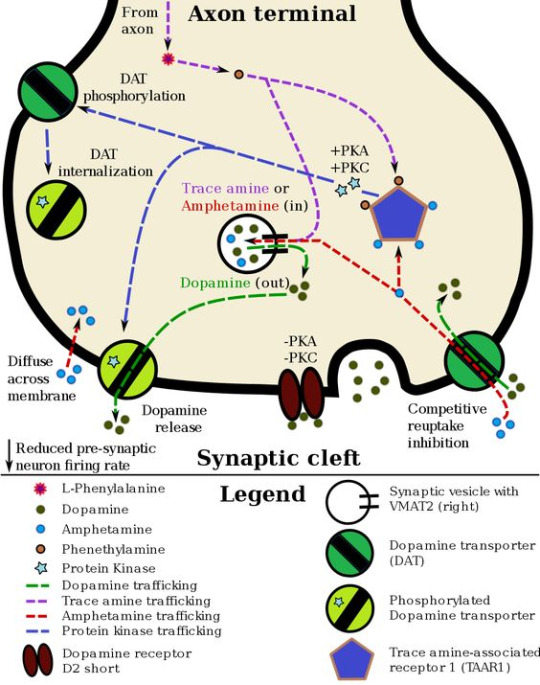
#science#biology#college#education#school#student#medicine#doctors#health#healthcare#pharmacology#pharmacy#medication#med student#med school#medical stuff#drugdiscovery#pharma industry#molecular biology#drugsandresearch#clinicalpharmacology#pharmaceuticalindustry
60 notes
·
View notes
Text
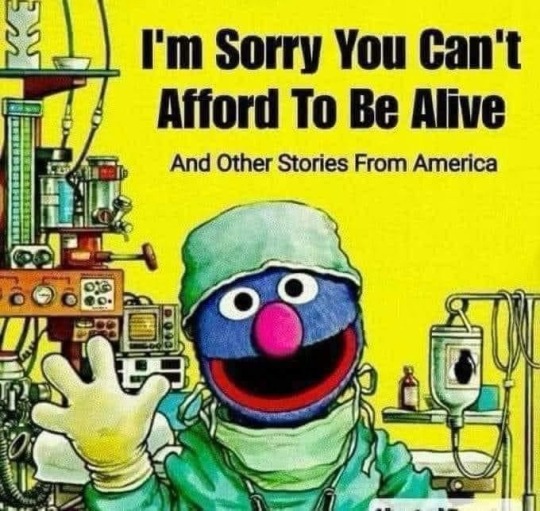
#this is why we can't have nice things#healthcare#healthcare in America#health for profit#wealthcare#wealthcare industry#healthcare as a product#for profit#for profit hospitals#universal healthcare#single payer healthcare#american horror story#America is a horror story#wealth drives people crazy#catholic wealth#wealth corrupts#wealth inequality#eugenics#capitalism#eugenics in capitalism#eugenics never goes away#pay to live#pay to play#big pharma#health insurance#health insurance companies#health insurance denial#health insurance is killing people#health insurance isn’t#lies and the lying liars who tell them
10 notes
·
View notes
Text
🤧💊⚰️
#big pharma#warning#be ware of scammers#criminals corruption blackmail#con artists#crimes against humanity#health#healthcare#diseases#murder by 💉💊#premature death#these people are evil#speaktruth#corruption#fight for justice#standup#speak up#truth#please share#wwg1wga
16 notes
·
View notes
Text
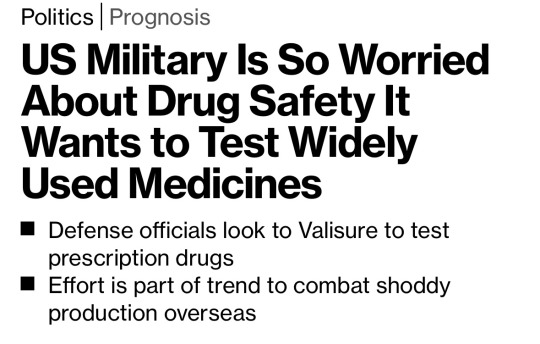
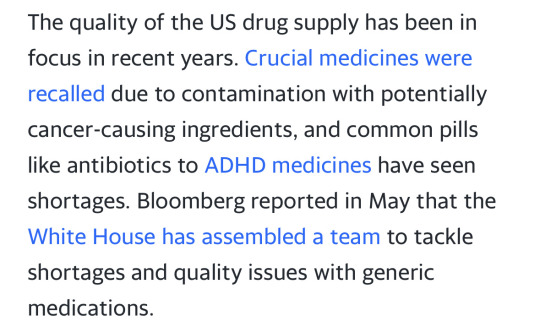
Very well functioning health care system!
#politics#us politics#military industrial complex#big pharma#government#the left#health#health care#public health#current events#news#universal healthcare#medicare for all
386 notes
·
View notes
Text
IF?
The government will give the public 60 days to comment on the new proposal before attempting to finalize it.
^^^ COMMENT vvv
#capitalism#healthcare is a human right#drug lobby#big pharma#drug manufacturers#economics#healthcare#public health#medicine#health care#patents#us politics
8 notes
·
View notes